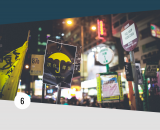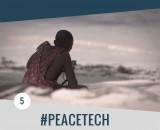Film, Truth, and the Pursuit of Peace
Film has power as a pathway to peace. In a certain kind of filmmaking, the ends and the means are inseparable; the way that a film is made is reflected in the final product. Gandhi has said the same about peace. Seen in this light, the process and product of socially-engaged films are inextricably linked, and though the content of a film’s final cut remains fixed, its effects are dynamic as new audiences engage with the material.
These films and filmmakers are architects of peace, and are as central to the process as legal actors, activists, journalists, and politicians. Socially-engaged filmmaking is collaborative and cooperative, entails countless decisions and compromises, and – because it seeks on-screen narrative resolution through building relationships based on off-screen trust – propels dialogue and dynamics that can be harnessed to build community. For instance, new forms of leadership, voice, and power are developed: first through the making of films, and then in audiences who are activated by them. This kind of creative expression, rooted in community, is a potent force for justice.
My appreciation of such filmmaking has led me to support and champion a wide array of artists and projects in what I see as almost a spiritual practice, though many of these artists would not apply this term to their work. Many examples come to mind: Leonard Retel Helmrich, Rithy Panh, Laura Poitras, Frances Reid and Deborah Hoffman, Thet Sambeth and Rob Lemkin, Pamela Yates, Paco de Onis, and Joshua Oppenheimer. These individuals have collectively spent more than a century pursuing cinema projects that function as peacebuilding tools. Their themes include: genocide, secrecy, impunity, and corruption.
Their films propose that the resolution of generational trauma requires an encounter between perpetrators and their victims in a way that recasts original power dynamics. Each must witness to the others’ realities, and the audience become the final witness. They further suggest that the question of justice must be raised, whether through legal mechanisms like a court, or a focus on the most human of acts: individual forgiveness. Sometimes one can lead to the other. This is the heart of the truth and reconciliation process. Combining storytelling, history, witnessing, and forgiveness, these filmmakers create cinema that is itself an act of justice.
Combining storytelling, history, witnessing, and forgiveness, these filmmakers create cinema that is itself an act of justice.
Buddhist monk Thich Nhat Hanh echoes and is echoed by many spiritual leaders in proposing that all suffering is the result of ‘wrong perceptions,’ and that suffering is inherent in human nature. Each of us has the capacity to both inflict and relieve suffering. Nhat Hanh describes deep listening as communication that resolves conflict and promotes peace. Such peace is more than the lack of violence and instability—it is the presence of compassion, an ongoing process, and a dynamic that we must continually work toward. Film can be an act of deep listening: its power is linked directly to its ability to ease suffering. These socially-engaged filmmakers have developed this approach over many years and through many films. Their stories have had extraordinary impact—they have shifted the course of history in ways large and small.
Such artists bring to mind the original meaning of ‘cinéma vérité’: their work provokes not by imposing an outsider’s perspective but by capturing the realities of life as they unfold. They do not, as French philosopher Edgar Morin described it, pretend to present truth; rather they present the problem of truth. And truth demands a response.
Academy Award-nominated Director Joshua Oppenheimer (Act of Killing | Look of Silence) reminds us that a camera does not simply record reality, but instead provokes a witnessing and rendering of reality that reveals deeper truths. His two films together pose the problem of truth for the perpetrators and victims of genocide in Indonesia as both groups continue to live in intimate proximity. Director and producer Laura Poitras, investigates the implications of a post-911 world in her trilogy of films (My Country, My Country | The Oath | Citzenfour). Yates and de Onis take on genocide and their work has been an integral part of the justice-seeking process in Guatemala over decades in When the Mountains Tremble and Granito. Their documentary, Granito, tells the story of how their first film, When the Mountains Tremble, was used as evidence for bringing the indictment for genocide against former dictator General Efraín Ríos Montt.
As a filmmaker-journalist, Thet Sambeth worked with Rob Lemkin to uncover the truth of the Cambodian genocide in . Rithy Panh’s extraordinary opus, including works like , is rooted in the same genocide. Leonard Retel Helmrich’s trilogy follows three generations of an Indonesian family who conduct their lives under the rule of fear. Reid and Hoffman’s Long Night’s Journey into Day defined for many, South Africa’s struggle against apartheid. These stories are for new generations to know, because it is in our nature to deny our capacity for indifference and violence. These films present a stark reminder of that dark side of human nature.
As a filmmaker-journalist, Thet Sambeth worked with Rob Lemkin to uncover the truth of the Cambodian genocide in Enemies of the People. Rithy Panh’s extraordinary opus, including works like Rice People and The Missing Picture, is rooted in the same genocide. Leonard Retel Helmrich’s trilogy (Eye of the Day | Shape of the Moon | Position Among the Stars) follows three generations of an Indonesian family who conduct their lives under the rule of fear. Reid and Hoffman’s Long Night’s Journey into Day defined for many, South Africa’s struggle against apartheid. These stories are for new generations to know, because it is in our nature to deny our capacity for indifference and violence. These films present a stark reminder of that dark side of human nature.
These films have also opened spaces in which people can finally speak and be heard by new audiences. At their most powerful, they shake the foundations of our assumptions and destabilize our certainties. This is what peacebuilding requires; a recasting of the previous status quo towards a new, more stable and generative one. Film is an art form that can help accomplish this feat by offering us a way first to understand the past and present, and then to imagine a new path forward. An accumulation of such stories provides steady reinforcement for critical inquiry and strengthens our ability to transforms our assumption that the ways things are is the ways things must always be. Such questioning is the beginning of peacebuilding. You can see it in the actions of the subjects of these films: the drive to reveal, to recount, to witness, to reimagine.
“Siksika Aboriginal Youth Filmmaking Camp” by Bridges Social Development (CC BY-NC 2.0)
Seeing film and justice as intertwined is a hallmark of Ford Foundation’s commitment to human dignity. For over 50 years, supporting essential stories and new modes of storytelling that remind us how dignity feels, and what the road to it looks like, has been a core Ford value. The impact of these films can be seen in the way they have become touchstones for eras and movement, a shorthand for entire historical events, and a way of understanding history that has been transformed by the films themselves.
In his 1970 Nobel Prize acceptance speech, Aleksandr Solzhenitsyn noted: “Falsehood can hold out against much in this world, but not against art. And no sooner will falsehood be dispersed than the nakedness of violence will be revealed in all its ugliness—and violence, decrepit, will fall.” These films and filmmakers are creating the conditions for justice to be expanded and reproduced and for peace to be realized—conditions that are crucial to imagining a future where peace is possible.
(Feature Photo Credit: “Looking at the Set” by Chris Campbell; CC BY-NC 2.0)

